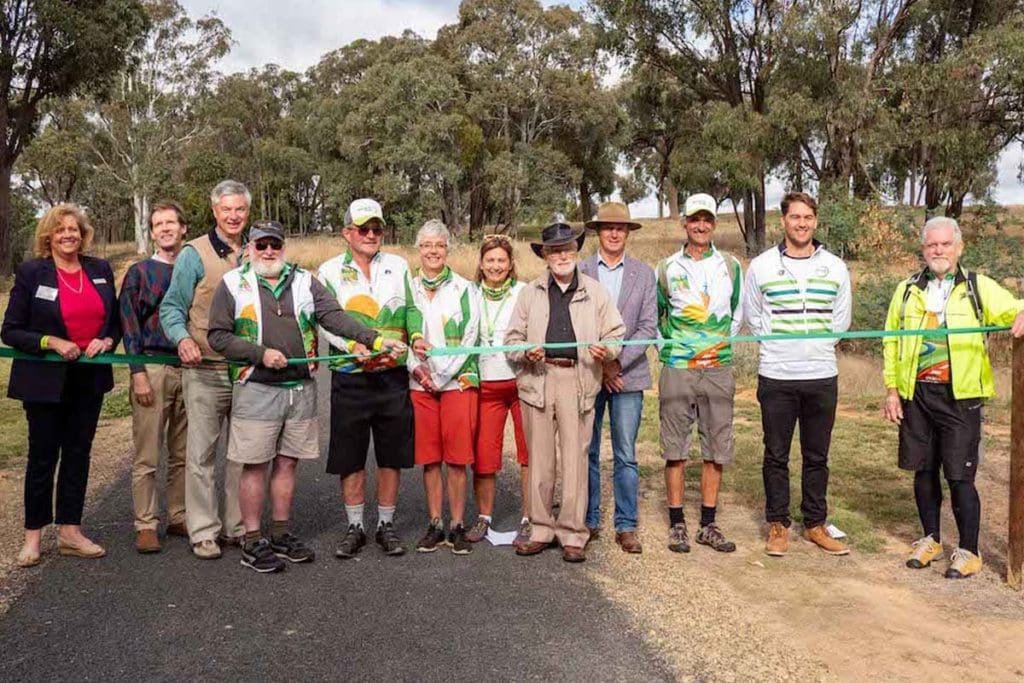Framework Launched to Guide More Rail Trails in NSW

Tumbarumba, NSW
A NSW Rail Trail Framework was released by the State Government this week to help expedite the creation of additional trails in NSW.
“The framework will expedite the development of rail trails across NSW by clarifying the proposal and approval process, as well as providing guidance for general rail trail operation and maintenance.”
Based on the evidence of two existing pilot rail trails, the Tumbarumba to Rosewood trail and currently-under-construction Northern Rivers Rail Trail, the new framework provides “rail trail project proponents with clarity around the NSW Government’s expectations at various stages in the establishment of a new rail trail, and to clearly outline NSW Government criteria in determining the viability of a rail tail”.
“The NSW Government supports the development of rail trails where there is demonstrated community support, where environmental impacts have been considered, and where a viable business model is in place,” according to the document’s introduction.
“With two pilot projects underway and the potential for future projects across NSW, a detailed and consistent NSW Rail Trails Framework is needed to provide clear guidance on the establishment of NSW Rail Trail projects that leverage identified benefits.
“The framework will expedite the development of rail trails across NSW by clarifying the proposal and approval process, as well as providing guidance for general rail trail operation and maintenance.”
Rail Trail Evaluation Summary
The document accompanies a Rail Trails for NSW Evaluation Summary released by the government last week, examining the two pilot projects.
“The Tumbarumba to Rosewood Rail Trail has delivered considerable positive outcomes in its first year of operation.”
“This evaluation was conducted to enable the NSW Government to learn from the experiences of both pilot rail trails; to understand what has worked and what may need to be done differently in the delivery of future Rail Trail projects in NSW,” the evaluation document says.
“Specifically, the evaluation was designed to review the legislative amendments processes of both projects, evaluate the operational model, measure community awareness, sentiment and satisfaction, and measure the economic and social outcomes of the operational Tumbarumba to Rosewood Rail Trail.”
The evaluation found the projects have been successful, displaying “evidence of delivering important outcomes against the majority of indicators of success”.
“However, there were inefficiencies in project delivery during the early stages in both pilot projects, particularly in relation to the legislative amendment process,” it says.
“Despite these issues, the Tumbarumba to Rosewood Rail Trail has delivered considerable positive outcomes in its first year of operation.”
The benefits it listed included greater community cohesion, reduced social isolation among the elderly and other residents, provision of a safe commuting corridor, and equal access to recreational land.

Several economic benefits since the Tumbarumba trail’s launch in April 2020 were also highlighted, including:
- A 20% increase in spending in the Tumbarumba region (compared to a statewide rise of 12% over the same period), as well as a 55% boost in discretionary spending
- A 14% rise in spending on consumer staples, “most likely from visitors staying in town”
- Nine new or expanding businesses
It says the evaluation’s findings “present the NSW Government with an opportunity to address the issues associated with the legislative amendment process that contributed to some confusion and delays in the delivery of new rail trail projects”.
“It will be important the delivery of future rail trails in NSW is well supported and responds to the growing momentum in the State for the creation of a broader network of connected rail trails,” the report states.
“These types of projects have the potential to link towns and regions and contribute significantly to social and economic outcomes in regional NSW.
“The NSW Government is aware of a further 10 rail trail proposals being worked on by councils and community groups. The 10 projects pass through 14 local government areas.”
Advocacy organisation Rail Trails Australia has welcomed the publication of the NSW framework.
“Although progress has been made in recent years, NSW still lags behind other States in the development of new rail trails and linked trail networks,” the group says in an article.
“Rail Trails Australia looks forward to progress on the many disused railway corridors in NSW, some of which have advanced rail trail proposals already in the pipeline.
“Rail Trails Australia will assist NSW rail trail groups with the use and interpretation of the NSW Rail Trails Framework.”
It invites rail trail groups seeking further information to email nsw@railtrails.org.au.
The government says the framework aims to:
- Provide guidance for rail trail proponents seeking to secure NSW Government support
- Outline clearly and transparently how the NSW Government determines whether a rail trail project is viable
- Support the planning and delivery of additional rail trails across NSW, with a focus on delivering the best outcomes for communities
- Provide a clear and transparent approach for the NSW Government to consider proposals during the funding application assessment, legislative amendment or lease intent processes
- Identify best practice approaches for trail development, including a recommended approach to community consultation, legislative changes, construction methods and operational models
- Support improved timeframes and efficiency of the legislative process required to open a rail trail
